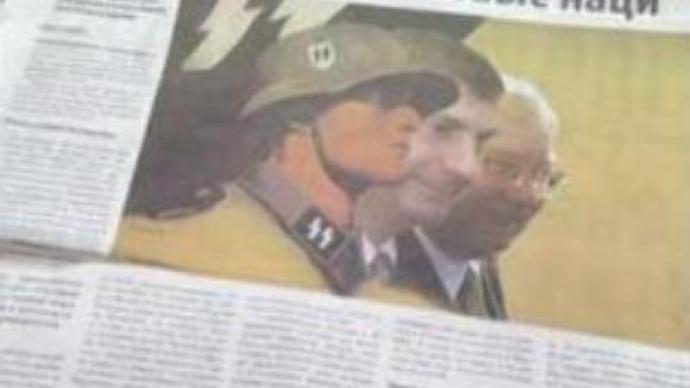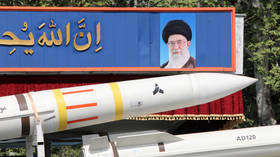Newspaper row in Estonia

A nespaper in Estonia called The Right and the Truth was closed after it accused the Prime Minister of being a Nazi sympathizer. A case was filed against the paper, but Estonian security police refused to take it up.
The Right and the Truth published a photo comparing Andrus Ansip to a German SS soldier following the Cabinet's decision to remove a monument to Soviet World War II fighters in Tallinn. Publicly comparing both the acting, and the former, Estonian Premiers to SS soldiers was seen as too much, especially ahead of the March parliamentary elections. Both politicians are running as candidates. Prime Minister Andrus Ansip, who was targeted in the newspaper, said the article was a pre-election provocation. “I had a look at this article, and I think it’s a usual pro-Russian propaganda text. And the picture is certainly a below-the-waist thing, inappropriate for a mainstream political party. But if someone behaves like a dog, it doesn’t mean I have to start barking, too,” said Andrus Ansip.Technically belonging to an independent foundation, The Right and the Truth newspaper was a de-facto Centrist party bulletin, issued irregularly because of financial problems. When the scandal broke out, the Centre party of Edgar Saavissar decided to withdraw all the 70 thousand copies of the newspaper and forbid the use of its logo, stopping its print run. The Right Wing coalition of the former Premier Mart Laar, also depicted on the picture, even filed a criminal complaint to the security police against the authors, claiming they were inciting hatred. "My first reaction was, of course, shock. Then I found myself personally insulted, and I found the Estonian state was also insulted. My personal insult was that my grandfather was shot by the Nazis,’ Mr Laar pointed out.Aleksandr Chaplygin who wrote the controversial article says the only thing he regrets is using the Centrist party logo in the newspaper title. “I am ready to sign under every word in this article. I don’t think I insulted anyone. And if someone doesn’t like to see their picture next to an SS soldier, why don’t those politicians mind being photographed, as they lay flowers at the SS veterans’ monuments?” wonders the author of the article.His partner Leivi Sher says the party’s decision to withdraw the paper and stop issuing it was an unprecedented act of censorship. “This is the first time in my memory that a newspaper was closed – even temporarily – because of censorship, because someone didn’t like it. Even in Soviet times it didn’t happen. I know that this question was discussed at the Cabinet’s meeting, and it almost provoked a crisis. The centrists were asked – why don’t they leave the coalition, if they permit themselves to criticize their partners in this way,” declared the journalist. Analysts suggest that by joining the debate on the Bronze Soldier monument in this way, the centrists have tried to intrude into the traditional field of Russian community parties. Andrey Zarenkov from the Estonian Anti-Fascist League, one of the activists who defends the monument condemns the move. “I think the Centrist party only wanted to pump up its political score, using the issue of the struggle with Nazism. They had one superfluous newspaper they had to close anyway, so they did it with maximal effect, attracting as much publicity as they could. We are against using the memory of Soviet warriors as a tool in the campaign,” he says. Ad hoc editors that put the controversial edition together say they used the Centre party logo by mistake. But political analysts suggest it was a planned stunt. Be it a case of censorship or self-censoring, the entire newspaper scandal in Estonia clearly has more to do with the nearing date of the elections than with the general worsening of press freedom in the country. But the mere fact that Estonia’s controversial past and some politicians’ alleged sympathies for Nazism remain a major issue of the campaign is symptomatic. Democracy is not only about free press and fair elections.
You can share this story on social media:












